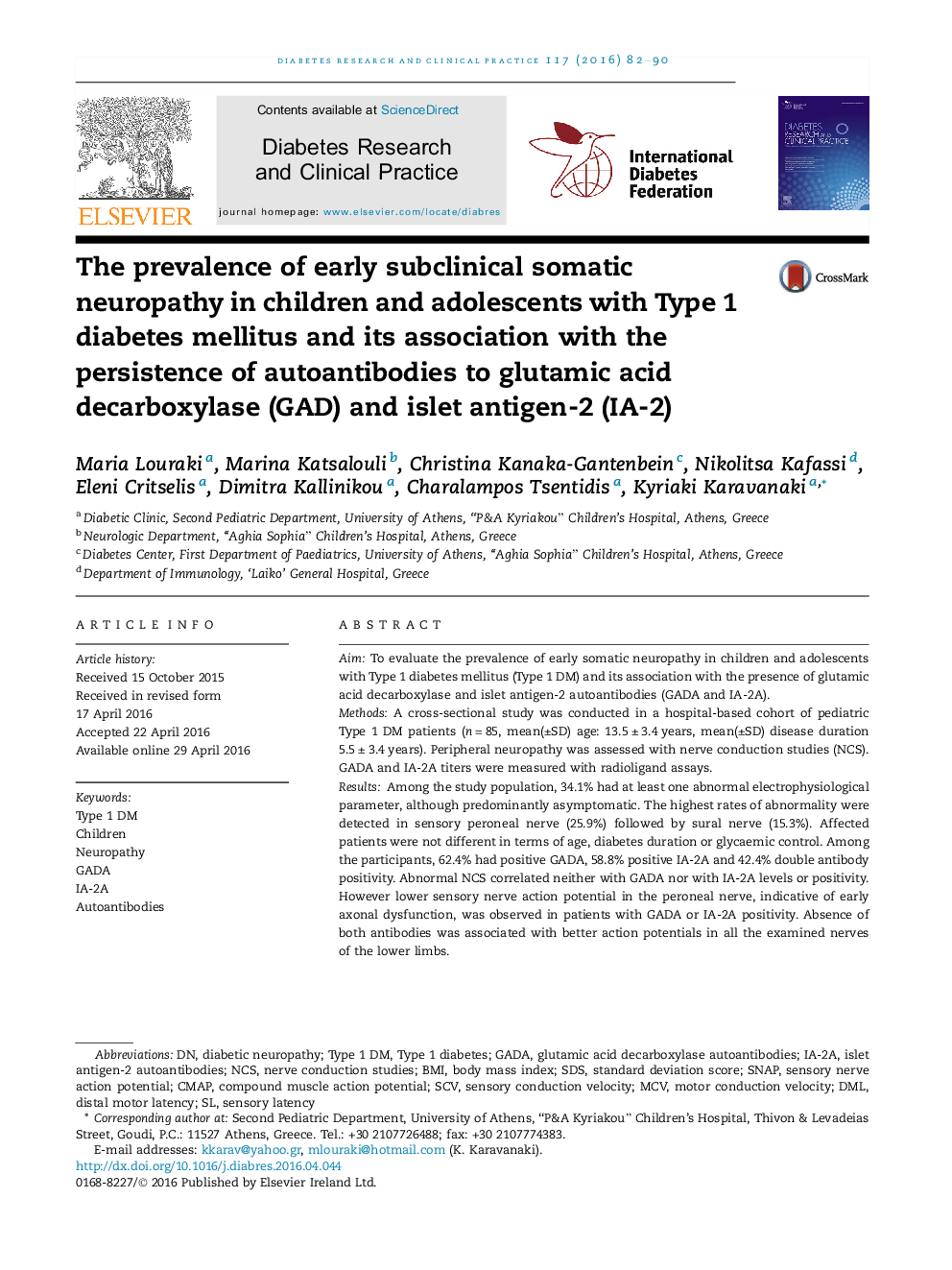| کد مقاله | کد نشریه | سال انتشار | مقاله انگلیسی | نسخه تمام متن |
|---|---|---|---|---|
| 5898749 | 1568798 | 2016 | 9 صفحه PDF | دانلود رایگان |

- Among examined nerves, the sensory peroneal nerve had the highest abnormality rates.
- The persistence of GADA and IA-2A was associated to slower peronial action potentials.
- Autoantibodies may be involved in axonal degeneration in early diabetic neuropathy.
AimTo evaluate the prevalence of early somatic neuropathy in children and adolescents with Type 1 diabetes mellitus (Type 1 DM) and its association with the presence of glutamic acid decarboxylase and islet antigen-2 autoantibodies (GADA and IA-2A).MethodsA cross-sectional study was conducted in a hospital-based cohort of pediatric Type 1 DM patients (n = 85, mean(±SD) age: 13.5 ± 3.4 years, mean(±SD) disease duration 5.5 ± 3.4 years). Peripheral neuropathy was assessed with nerve conduction studies (NCS). GADA and IA-2A titers were measured with radioligand assays.ResultsAmong the study population, 34.1% had at least one abnormal electrophysiological parameter, although predominantly asymptomatic. The highest rates of abnormality were detected in sensory peroneal nerve (25.9%) followed by sural nerve (15.3%). Affected patients were not different in terms of age, diabetes duration or glycaemic control. Among the participants, 62.4% had positive GADA, 58.8% positive IA-2A and 42.4% double antibody positivity. Abnormal NCS correlated neither with GADA nor with IA-2A levels or positivity. However lower sensory nerve action potential in the peroneal nerve, indicative of early axonal dysfunction, was observed in patients with GADA or IA-2A positivity. Absence of both antibodies was associated with better action potentials in all the examined nerves of the lower limbs.ConclusionsImpaired indices of subclinical peripheral primarily sensory neuropathy were present among one third of Type 1 DM children and adolescents, with no impact of diabetes duration or glycaemic control. GADA and IA-2A seem to be involved in the development of axonal degeneration, in a pathway which remains to be identified.
Journal: Diabetes Research and Clinical Practice - Volume 117, July 2016, Pages 82-90